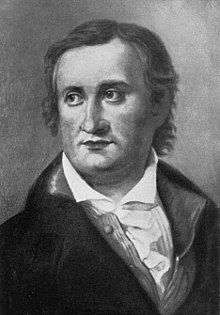Thomas Johann Seebeck
| Thomas Johann Seebeck | |
|---|---|
 |
|
| Born |
9 April 1770 Reval |
| Died |
10 December 1831 (aged 61) Berlin |
| Fields | Physics |
| Known for | Discovering the thermoelectric effect |
Thomas Johann Seebeck (German: [ˈtoːmas ˈjoːhan ˈzeːbɛk]; 9 April 1770 – 10 December 1831) was a physicist who in 1821 discovered the thermoelectric effect.
Seebeck was born in Reval (today Tallinn, Estonia) to a wealthy Baltic German merchant family. He received a medical degree in 1802 from the University of Göttingen, but preferred to study physics. In 1821 he discovered the thermoelectric effect, where a junction of dissimilar metals produces an electric current when exposed to a temperature gradient. This is now called the Peltier–Seebeck effect and is the basis of thermocouples and thermopiles.
In 1821 Thomas Johann Seebeck found that a circuit made from two dissimilar metals with junctions at different temperatures would deflect a compass magnet. Seebeck initially believed this was due to magnetism induced by the temperature difference. However, it was quickly realized that it was an electric current that is induced, which by Ampere's law deflects the magnet. More specifically, the temperature difference produces an electric potential (voltage) which can drive an electric current in a closed circuit. Today, this effect is known as the Peltier–Seebeck effect.
The voltage produced is proportional to the temperature difference between the two junctions. The proportionality constant (a) is known as the Seebeck coefficient, and often referred to as the thermoelectric power or thermopower. The Seebeck voltage does not depend on the distribution of temperature along the metals between the junctions. This effect is the physical basis for a thermocouple, which is used often for temperature measurement.
...
Wikipedia

